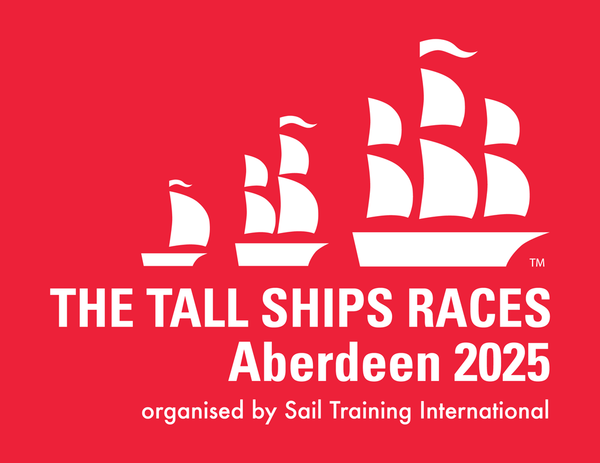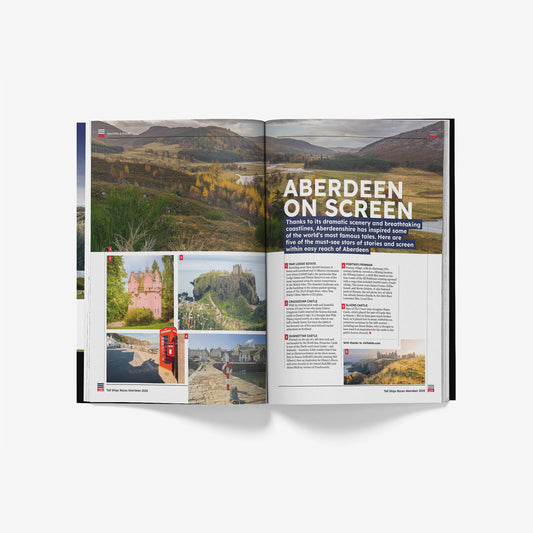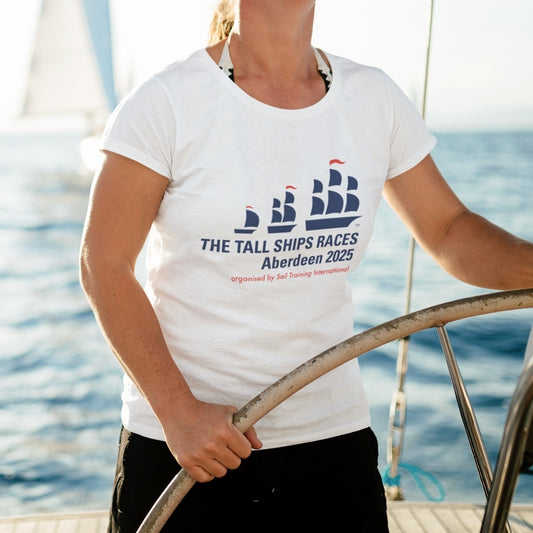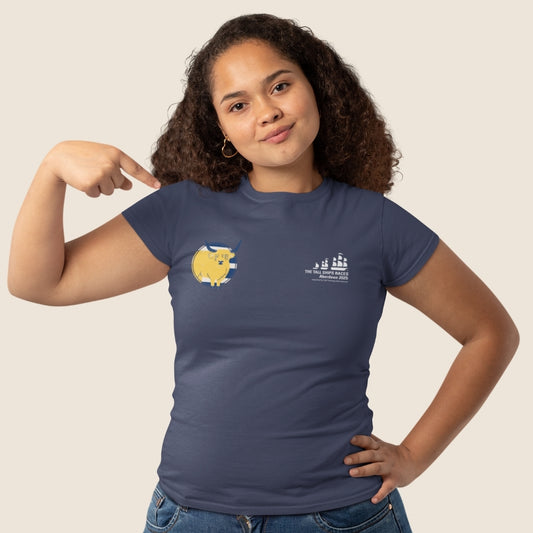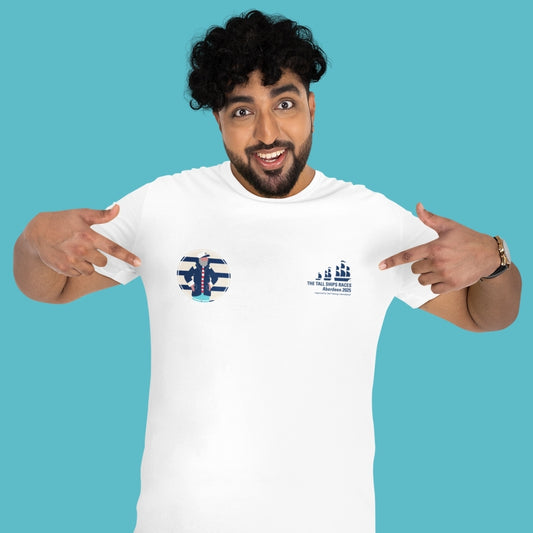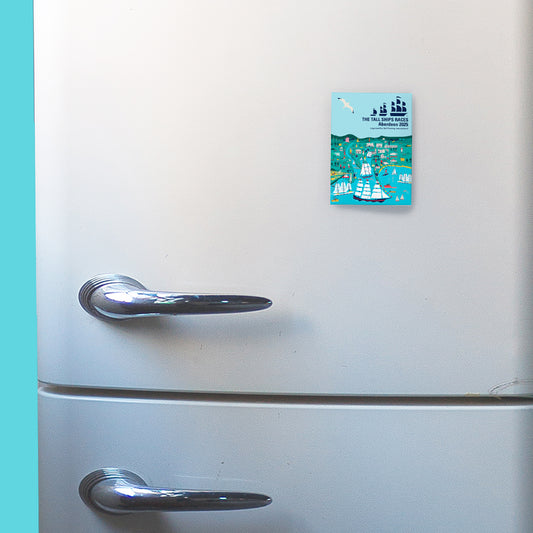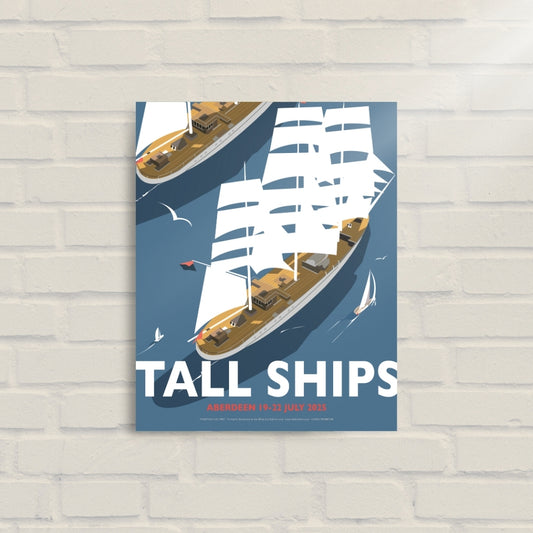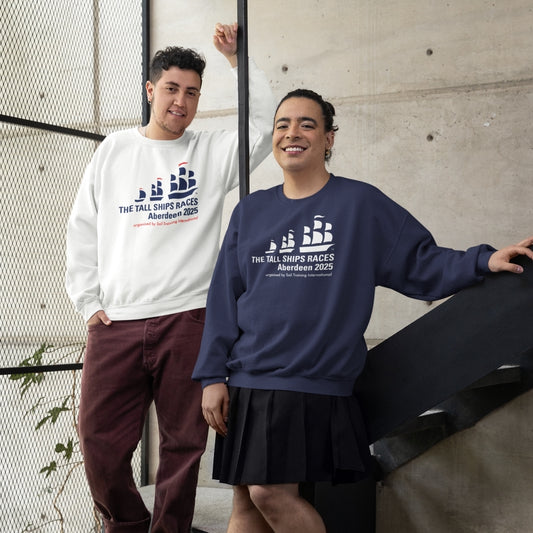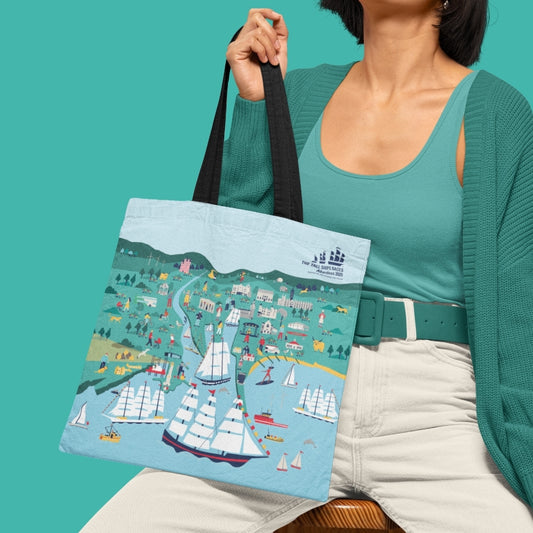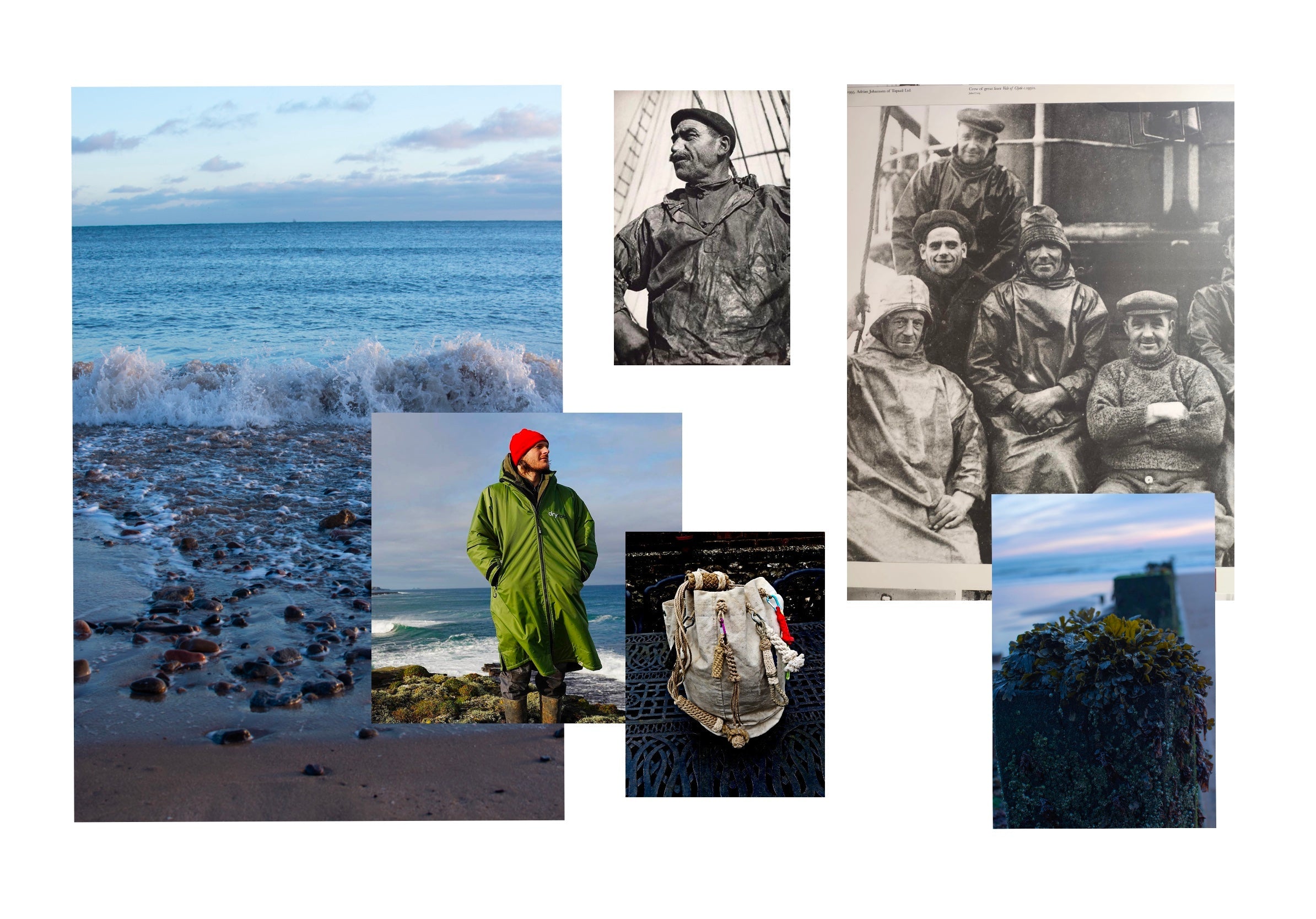
Tall Ships Maker - Introducing Fernweh
Share
Educated at Gray's School of Art and based in Aberdeen Laura Sheriffs tells us about her Tall Ships Maker journey, from fisherman's ditty bags to repurposing Scottish sail cloth...

Growing up in Aberdeen, I’ve always been drawn to the sea and the coast, and I
think maybe there’s a part of every Aberdonian who feels that inexplicable
connection to the bracing North Sea water.
We are a city, and a people who have been shaped and honed by the crashing
waves of the North sea. Our lives and livelihoods are rooted in this maritime
heritage, which has grown and adapted throughout the passage of time; a city built
on trade, proud ship builders, strong fishing families, and in more recent history, a
city of oil. Even now, as these industries move and adapt, we still feel the call of the
water, a resilient city salted by an often unforgiving tide.
This brings me to wild swimming, which I fell in love with a few years ago. There’s
nothing quite like the rush of the baltic North Sea, the feeling of sand and seaweed
beneath your feet. In all the trappings of modern day life, it feels like a raw but
welcome reconnection to nature.
For this project, I was inspired to develop and create a series of products with wild
swimming in mind, but whilst celebrating the maritime heritage of Aberdeen. Using
our past relationship with the sea, to inspire the new role the sea plays in our lives.
The focal point of my collection a dry robe style jacket inspired by traditional
fisherman’s smocks and the long waterproof jackets worn at sea. This jacket tells the
story of Aberdeen’s seafaring history through cloth, repurposing several materials
that have been historically used as sailcloth, plus the sail from one of the vessels
taking part at this year’s Tall Ships! Sourcing this material has been a journey in itself and has taken me all over Scotland.

I also wanted to reimagine the “fisherman’s ditty bag,” traditionally a canvas round-bottomed bag with rope straps, which were used by sailors and fishermen to carry their belongings, and smaller versions were often used to hold sewing needles and
thread for repairing sails whilst at sea. My vision of the ditty bag is a practical and
durable accessory for wild swimmers. I see this as a perfect accompaniment to the
jacket, with the potential to expand into a broader collection of products further down
the line.

My Tall Ships Maker Project began as a way to celebrate the city’s maritime heritage
through fabric, but has become a story about people, community and our deep
connection to the beautiful but often harsh North Sea.
As a bag designer/maker, I create products with purpose, using fabrics full of
character and story. I’m fascinated by the story behind a cloth, the skilled hands that
have touched a material long before it has reached my studio. Fabrics that connect
us to a place.
This was the starting point of my Tall Ships project. I wanted to tell the story of our
historic relationship to the sea, through fabric and stitch, and creating something that
connects to the city, its hardworking people, and deeply rooted in the North East’s
fishing, shipbuilding and sailing traditions.
I sourced research from the Aberdeen Art Gallery online collections, and visited the
Special Collections archive to see examples of what NE trawlermen wore. However
it was when I reached out to a local Aberdeen history Facebook group, I was really
touched at how much fierce passion we have for the sea, and how many of us still
have this connection. I was inundated with kind people sending photos of their
fathers, grandfathers and even themselves on board vessels. It was during this
process I also discovered that my own grandfather had been a trawlerman, before
my dad was born. Perhaps this is where my deep rooted connection to the water has
come from…

Working with a zero-waste mindset is central to my practice. I’m passionate about
repurposing deadstock materials, giving them a new lease of life, while honouring
their original story. From the get go of this project, I wanted to use old sailcloth This
took me on a research mission to source old sails, and I found so many kind people
who were happy to donate a sail to this project and become part of its story.
The main sail in the collection took me on a trip to Greenock, another port with a
huge shipbuilding heritage, to Ocean Youth Trust Scotland. I was delighted to
receive a decommissioned sail from the Alba Explorer, a Class C vessel which is
taking part in the Tall Ships Races again this year. The sail in question was part of a
voyage around the world. It’s so exciting to think that this sail has seen so much, has
travelled across oceans to be here in my studio right now. I hope I can do it justice
and give this sail a new chapter.


Another material I managed to source was traditional flax linen, right from the banks
of the River Dee itself. From the unassuming building of Bisset & Ross, a
manufacturer of tarpaulins for the oil industry. I had the most wonderful chat with the
owner Eddie, who told me the story of the company, and how they had originally
been traditional sail makers, outfitting most of the fishing fleet in Aberdeen Harbour,
before pivoting with the oil boom. Bisset & Ross still had some traditional flax linen
that was used to make the sails, which I’m incredibly excited to incorporate into the
collection.

Making up the rest of my fabric story, is waxed cotton, a signature fabric in my core
range. However, waxed cotton has its roots in the Scottish maritime history, originally
developed in Scotland as sailcloth for clipper ships. Halley Stevensons, where I
source my waxed cotton, remain on their original factory site at the Baltic Works in
Dundee, and have been at the forefront or waterproofing textiles since 1864. I also
have managed to source a traditional NE fishing sail from Richard Thorne of the
Scottish Traditional Boat Festival, dated around the 1950s.

I’m unbelievably honoured by the support people have had for this project, and hope
to honour these storied fabrics that have seen so much life, and do these incredible
materials justice, whilst continuing exploration of how we can repurpose these
maritime materials with intention.
I’m looking forward to sharing more of this creative journey, the Tall Ships Maker
Project has offered me a unique opportunity to draw inspiration from our history
whilst developing my own practice, and taking it in a new direction. Above all, I want
to pay homage to our proud coastal heritage and connection to the sea, while
creating a body of work that resonates with the present and beyond
To discover more and buy existing products from Fernweh visit www.fernweh.com
Follow Fernweh on Instagram click here

